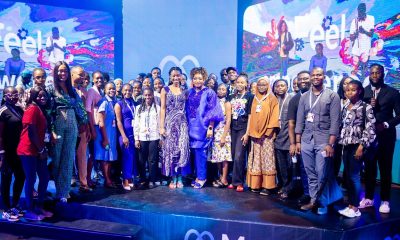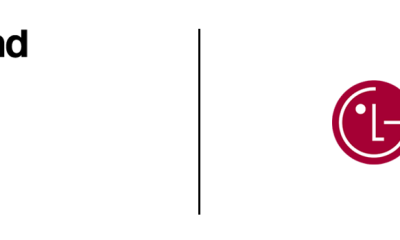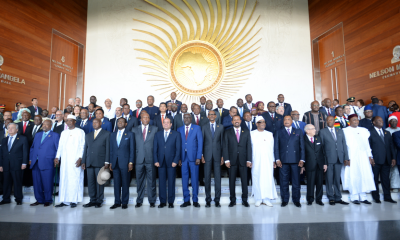Health
Telehealth: the game-changer for healthcare in Africa

The statistics remain grim; nearly half of the world’s population still lacks access to essential health services, and each year at least 100 million people are pushed into poverty in the attempt to pay for access to these services.
Those figures should be an anomaly, but are the stark reality – and the fact remains that many of the people who fail to get much-needed access to care live in Africa. Emerging economies typically bear the brunt of a lack of access because of gaps in the availability of services and citizens battling to afford even the most basic healthcare.
The challenge of having such a high number of the continent’s people unable to access even basic healthcare, which is a fundamental human right is increasingly being offset by the introduction of solutions borne from rapid technological advancement – innovations that are removing traditional barriers to access.
One such innovation is telehealth – or telemedicine – which is the remote diagnosis and treatment of patients through the use of telecommunications and digital technology such as mobile devices and computers.

Telehealth as a viable solution in the quest for access to care
Telehealth has quickly gained itself a reputation as an effective solution to help achieve the goal of universal health coverage. The industry has grown exponentially and it is predicted that it will be worth approximately $89 million globally by 2023.
This growth can largely be attributed to telehealth’s benefits, which have been widely felt wherever it has been adopted. By enabling healthcare professionals to diagnose and treat patients without needing to see them face-to-face, telehealth effectively helps lower the costs of delivering healthcare services.
Telehealth also has the potential to overcome shortages of healthcare professionals by increasing access to specialists in bigger and more well-equipped medical centres, hospitals and academic institutions. This has far-reaching consequences in places such as Africa, where patients often have to walk long distances or catch multiple forms of transport before they even get the chance to join a long queue to see a medical professional – a reality I have often witnessed myself. I believe telehealth is a big step in the right direction of overcoming this challenge and I am heartened by the encouraging signs of its uptake in Africa.
All telehealth requires is access to a mobile device and internet connection, which has proved to be a massive area of growth in Africa.
Also Read Interview with Badejo Stephen, CEO and Founder of The Removalist Logistics
Mobile has helped Africa leapfrog many of the challenges the continent faces – ranging from accessing financial services to education – so it comes as little surprise that subscriber penetration reached 444 million in 2017 and is expected to hit 634 million by 2025.
More than just being mobile, though, African citizens are making the move to smartphones and mobile broadband: from 250 million people with smartphones and 38 percent of all connections being mobile broadband at the end of 2017, this will accelerate to 690 million smartphones and mobile broadband connections sitting at 87 percent by 2025.
These millions with smartphones and mobile broadband connections are able to access life-changing – and life-saving – services, such as telehealth solutions.
Creating opportunities for access to healthcare is at the forefront of my vision and innovations like telehealth excite me. This shift has led to a proliferation of platforms and apps that open up access to care.
There are multiple kinds of apps that allow people to talk to or text doctors, get daily health tips and find out what their symptoms can mean, or which help people living with specific illnesses – such as diabetes – manage their disease. And these apps have widely proven to not only improve access to care, but also to ultimately improve the patient experience.
In fact, our latest Future Health Index (FHI) research has shown that a third of South African healthcare professionals say that their patients’ experience has been positively impacted by telehealth in the past five years. It has also indicated that 38% of South Africans are open to remote consultations for non-urgent care – showing the potential of telehealth as a tool to provide care.

Targeting poor and underserved communities
There are additional examples of telehealth solutions that have been implemented specifically to improve access and provide healthcare services to the poor and those living in remote, rural areas.
In Kenya, for instance, 450 healthcare providers have partnered with M-TIBA, a mobile service that allows people to send, spend and save money specifically for healthcare, to provide mobile ultrasounds for over 100 000 patients.
Kenya also launched its national telemedicine initiative for the poor and marginalised in rural areas in 2015. The initiative helps patients and healthcare providers in rural areas to use video conferencing to interact with experts at the country’s biggest referral hospital, Kenyatta National Hospital. This not only helps with diagnosis and treatment, but also with training and research.
In South Africa, the Impilo Initiative also helps give access to care in rural areas, but focuses specifically on women and girls and providing pre- and post-natal care. Established in 2018, it equips community health workers with smartphones and tablets to facilitate virtual doctor’s appointments.
Although there are no formal statistics on hand to reflect exactly how many patients these two initiatives have positively impacted, I have seen enough telehealth solutions in action to know that they make a tangible difference in the lives of the people that need it most.
Philips too, for example, has numerous telehealth solutions that we have piloted in Kenya that we can see are making a real difference in underserved communities. The Philips Foundation, for instance, is supporting a number of projects that explore the use of mobile ultrasound technology at primary care level to enhance availability of affordable services in the underserved communities and remote areas of Kenya.
One such project is called “Mimba Yangu”, in collaboration with the Centre of Excellence in Women and Child Health of the Aga Khan University, which is currently looking into the feasibility, impact and costs of quality antenatal care and examining if ultrasounds before 24 weeks of pregnancy, as recommended by the World Health Organisation (WHO), will result in better health outcomes for mothers and babies.
Together with Amref International University, the Philips Foundation is also testing the viability of ultrasound in the business models of midwives. These projects look, in particular, at our Lumify and Philips Mobile Obstetrics Monitoring (MOM) solutions.
The Lumify uses a smartphone-based mobile app and portable ultrasound to help both healthcare professionals and mothers. Medical professionals are able to deliver care wherever it is needed even in the most remote locations, while mothers are able to see clear and high-quality images of their unborn babies. This means that patients can be treated at the point-of-care with a greater chance of success because of faster and more accurate diagnosis and treatment. We pride ourselves on this innovation as we work towards reducing mother and child mortality rates on the continent.
The Philips Mobile Obstetrics Monitoring (MOM) solution, meanwhile, is a scalable telehealth platform that allows midwives to remotely monitor patients from hospitals or home through data collected from physical examinations and then shared to the centralised MOM server. This data can then be used to determine if a pregnancy is high-risk so that immediate care can be provided.
MOM has been used successfully in Indonesia – which, like most African countries, is an emerging market. I personally witnessed its efficacy as the pilot was run during my time as the Head of the Philips consumer business in Indonesia. In this pilot study, detection of very high-risk pregnancies increased threefold and zero maternal deaths were recorded. There was also a 99 percent reduction in anaemia from the first to the third trimester through enhanced patient management. These results are testament to the impactful difference our innovations are making.
It’s clear then that telehealth presents a clear opportunity for Africa, where nearly 700 women die of pregnancy-related causes every day. Research by the WHOhas shown that at least two thirds of mothers and children can be saved with cost-effective interventions and solutions like the Lumify and MOM – making it critical to introduce them to these countries to avoid preventable deaths.
These examples clearly show the immense potential of telehealth to drive widespread access to essential healthcare services – making it critical for healthcare providers to continue to implement these solutions at scale to give citizens across the African continent the healthcare they deserve.
Article by Jasper Westerink, CEO Philips Africa
SOURCE: https://www.linkedin.com/pulse/telehealth-game-changer-healthcare-africa-jasper-westerink-2e
Health
Inaugural Pan-African Nutrition and Health Summit set to shape a healthier continent

The inaugural edition of Africa’s Nutrition and Health Summit is set to convene on November 16, 2024, bringing together an extensive network of healthcare practitioners, nutrition experts, agricultural stakeholders, policymakers, and influential leaders from all over the continent under the theme, ” Soil to Wellness: Shaping a United Approach to Africa’s Health.” This groundbreaking summit aims to address the critical rise of non-communicable diseases (NCDs) across Africa through integrative approaches to preventive health, nutrition, and sustainable lifestyle practices.
This movement would explore holistic and practical solutions that unite stakeholders along the health and nutrition value chain, with a critical focus on how surging rates of NCDs like diabetes, hypertension, and obesity can be curbed via sustainable agriculture, improved food quality, and healthier lifestyle choices, to reshape our food and lifestyle culture, thereby laying a foundation for better health outcomes, for generations to come.
A Key Focus on Nutrition and Lifestyle Practices
The summit’s agenda will include panels on integrative approaches to nutrition and preventive health, the dual burdens of malnutrition and obesity, the impact of digital health in preventing diet-related diseases, and the role of sustainable agriculture in food quality. Our holistic approach strives to demonstrate how Africa’s diverse and rich agricultural resources can play a pivotal role in ensuring food security, balanced nutrition, and wellness for all citizens.
Call to Action
The inaugural edition of ANHS is especially relevant to anyone invested in the long-term health and wellness of the African continent. Such stakeholders are not limited to health professionals, nutrition experts, agricultural stakeholders, policy influencers, researchers, food producers, and processors. It is indeed a legacy-defining opening for businesses and community leaders interested in leaving their prints in the sands of policies that would advance health and wellness on the continent.
Participants will gain insights from leading experts and join the cause to champion Africa’s health by focusing on the most essential aspects of disease prevention and overall wellness. Now, more than ever, it is crucial to prioritize wellness at the societal level, addressing the connections between soil health, food quality, and sustainable practices that contribute directly or indirectly to healthy living.
Join us at the inaugural edition of Africa’s Nutrition and Health Summit on November 16, 2024, as we unite to shape a healthier continent – one that intentionally harnesses her resources and expertise to combat non-communicable diseases.
Register here to attend ANHS 2024
For more information, press inquiries, or partnership opportunities, please contact:
RSB
Official Branding Partner of ANHS
Health
Dr. Jesupelumi Adenihun: Adopting a lifestyle of sustainable health practices with food

Dr. Jesupelumi O. Adenihun (Image: Supplied)
You have likely heard the saying, “You are what you eat,” and it couldn’t be truer. What we consume plays a far greater role in our health than many of us realize. Over time, our eating habits can either support our body’s natural healing processes, leading to improved health and vitality, or contribute to nutrient deficiencies, inflammation, and even chronic diseases.
What this means is, our eating habits over time sets off a series of chain reactions in our bodies that impact our overall well-being. The good news, however, is that by consistently making the right food choices, we can put ourselves on the path to a state of good health and well-being. While this might sound daunting at first, it is often the small, consistent actions that yield the best results. Let’s take a look at 10 simple but effective habits you can begin to cultivate for better health and adopt as lifestyle practices:
- Substitute soda with water: No beverage is more refreshing or beneficial than plain water. It hydrates, cleanses, and confers numerous health benefits.
- Snack on nuts and seeds: When you are craving a snack, go for nuts or seeds, unless you have an allergy. They are nutrient-dense and can also be satisfying.
- Opt for grilled or baked over fried: Choosing grilled or baked foods helps reduce unhealthy fat intake without compromising on flavor. This also helps reduce the risk of developing high cholesterol levels which is a cardiovascular risk.
- Enjoy homemade smoothies over sugary drinks: When time permits, make homemade smoothies making use of reliable recipes. If you are short on time, consider vendors who provide fresh, nutrient-packed options.
- Practice mindful eating: Mindful eating means being fully present during meals, savoring each bite, and listening to your body’s signals. Eating mindfully is a game changer for a lot of people.
- Be well-informed about what you consume: Whether it’s food or drinks, it is essential that you stay conscious of what’s in your food and drinks. Many packaged products contain hidden sugars that the body doesn’t exactly need. Always take a moment to check the ingredients.
- Add more vegetables to your plate: Think beyond the usual veggies—some varieties exist which also depends on your geographical location. Be open and willing to explore new options and add color to your meals.
- Prioritize lean proteins: Not all proteins are created equal. Make lean protein choices and consider plant-based options to support your overall health.
- Use natural spices over salt-laden seasonings: High salt intake is known to be a contributor to heart-related conditions like hypertension. Opt for natural herbs and spices to add flavor without carrying on health risks.
- Stay physically active: Find an activity you enjoy and can commit to, whether you are at home or on the go. Consistency is key. Also seek the counsel of a coach if you need to.
Remember, true wealth lies in your health. Let each meal choice you make be a step toward a healthier, more vibrant life. Eat to wealth, health is wealth.
Written By: Dr. Jesupelumi O. Adenihun (Nutrition Coach, Preventive health care specialist).
Health
Bridging The Gap Between Menstrual Health and Mental Health in Africa

Menstrual health is not just about periods; it’s about breaking the cycle of exclusion and empowering the future of Africa – one girl at a time.
Empowering women and girls who menstruate worldwide starts with breaking the silence around periods. Eno, a 14-year-old girl from a remote community in the south, shrinks when her period arrives each month. Shame and fear are a constant part of her experience. “At school, whispers follow me. They call me ‘dirty’ because I can’t afford pads. I use the white piece of cloth my mother gave me and the extra layer of pad I had sewn on our neighbor’s machine using pieces from his shop.” Eno’s story, though heartbreaking, is far from unique. Across Africa, millions of girls and women face a hidden crisis: period poverty.
Period poverty refers to the inability to afford and access menstrual products, sanitation and hygiene facilities, and education and awareness to manage menstrual health. Globally, more than two billion people around the world menstruate monthly.
Menstruation, a healthy and natural biological process continues to be shrouded in silence and stigma across many parts of Africa. This silence perpetuates a cycle of neglect and exclusion, where the menstrual health needs of women and girls are ignored, leading to significant physical and mental health issues.
Daily, women and girls are unable to afford sanitary pads, forcing them to resort to unhygienic alternatives like old rags, leaves, old clothes, cotton wool, toilet paper, newspaper, and make-shift hygienic pads. This lack of access not only affects their physical health but also their mental well-being, as they experience anxiety, shame, and isolation during their menstrual cycles. With limited to no access to safe water and sanitation to manage their menstrual health and hygiene, these women and girls who cannot afford menstrual products do not live well within their rights and freedoms as their menses interrupt their day-to-day flow.
Human-Centered Stories
To truly understand the impact, we must listen to the voices of those affected. Nike, a 15-year-old girl from a rural community in Ogun State shared, “I have to stay home when I have my period because I don’t have pads. I miss out on school and feel ashamed.” Rukkayat, another young woman from a community in Abuja stated, “The stigma around menstruation is so strong that I can’t even talk to my teachers about it. It feels like a dirty secret. I feel dirty walking around my school. So, I’d rather stay at home when I’m on my menses to endure the pain and take care of myself.” These anonymous quotes reflect a common reality for many girls and women across Africa, highlighting the urgent need for change.
Addressing Stigmas and Period Poverty
Period poverty stems from persistent stigmas around menstruation. These stigmas include the belief that menstruating women are impure, leading to their exclusion from everyday activities and social interactions. Such beliefs not only undermine women’s confidence but also reinforce gender inequality. Periods, already a source of physical discomfort, become a breeding ground for anxiety, shame, and isolation. This can lead to depression, decreased self-esteem, and a reluctance to seek help. The link between menstrual health and mental health is undeniable.
To combat these stigmas, sensitization initiatives, and project outreaches need to provide menstrual products and education. These programs will empower girls with knowledge and resources, breaking the silence and changing societal attitudes toward menstruation.
Breaking the Cycle: Investing in Solutions, Empowering Futures
So, how can we bridge the gap between menstrual health and mental health by showing one can’t do without the other? By recognizing that menstrual health is intrinsically linked to mental well-being, we can create holistic approaches that address both.
- Combat Stigma Through Education: Open conversations are key. Educational programs that address menstrual hygiene and dispel myths can empower girls and communities. Schools and communities should provide comprehensive menstrual education that includes mental health support.
- Invest in Sustainable Solutions: Supporting the development and distribution of affordable, reusable menstrual products is crucial. Access to menstrual products should be seen as a basic human right, and efforts should be made to ensure that all girls and women have the necessary resources.
- Build Sanitation Infrastructure: Safe and private sanitation facilities in schools and public spaces are essential for dignity and hygiene management.
- Champion Advocacy: Investing in menstrual health advocacy at the local and national level can lead to policy changes that prioritize girls’ needs. From providing dignity kits to advocating for safe and private facilities, menstrual hygiene management is crucial for their well-being and development. Through advocating for women and girls, we can ensure every girl has the knowledge and resources she needs to thrive.
By investing in menstrual health, we invest in a future where girls like Eno, Nike, and Rukkayat can access education, participate fully in life, and thrive. Through increased conversations and heartfelt advocacy, the Going North Project initiative is addressing the urgent need for quality healthcare, education, and the eradication of period poverty through targeted outreach programs.
The Going North Project aligns with the Sustainable Development Goals (SDGs) of Education, Health, and Gender Equality, which are crucial for fostering a brighter future and empowering girls – one at a time.
Let us address the urgent need for accessible menstrual health resources and education, highlighting how this issue impacts individuals globally. This advocacy inspires and reminds us that menstrual equity is essential for a just and healthy world. Together, we can break the stigma and ensure menstrual equity for all.
-

 Afripreneur11 hours ago
Afripreneur11 hours agoRedefining Real Estate Marketing: An Interview with Imelda Usoro Olaoye, Founder of Thinkmint
-

 Afripreneur10 hours ago
Afripreneur10 hours agoOluchi Anoruo on building SmartPharm and addressing access to healthcare products
-

 Economy15 hours ago
Economy15 hours agoMeta Hosts its First Youth Summit in Nigeria to Drive Innovation and Empowerment
-

 Technology15 hours ago
Technology15 hours agoLG’s Brand Reinvention: A Global Success Story

















